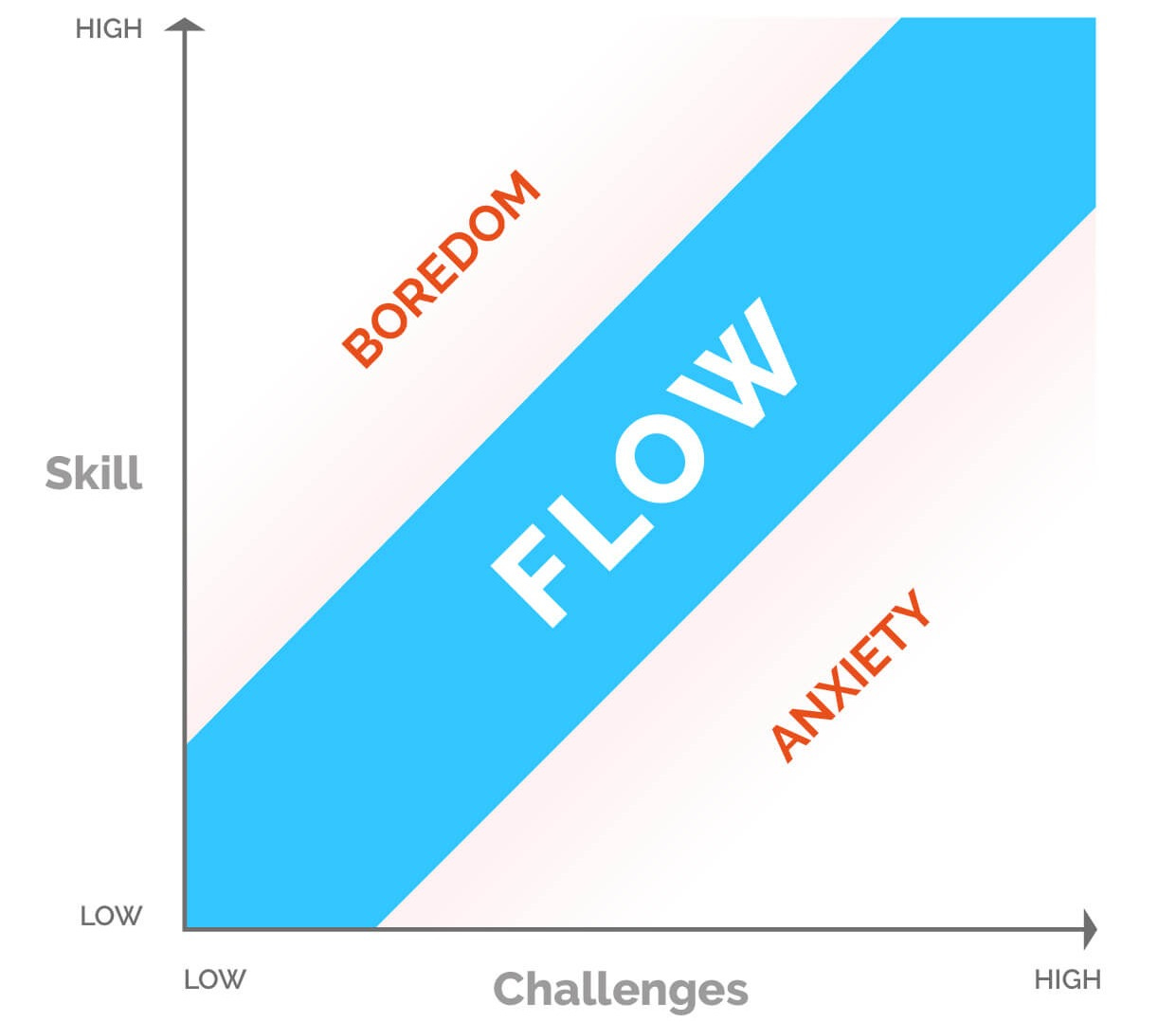Amplify Strengths to Build Exceptional, High-Performing Teams
Maximize the full potential of your team by focusing on their unique strengths
Are you truly leveraging the full potential of your team?
Try a simple experiment. Ask your team a simple question:
“Do you feel your unique strengths and skills are fully utilized in your current role?”
Then, ask yourself the same thing.
What you’ll uncover may surprise you: hidden potential, untapped strengths, or perhaps even some frustration from talents not being fully utilized.
A high-performing team is built on leveraging each individual’s strengths. This is a critical driver of motivation and productivity—empowering individuals to focus on what they do best, every single day.
Natural Talent vs. Forced Growth
From a young age, we naturally gravitate toward what we excel at.
A child instinctively chooses the toys or games they enjoy—the ones they’re good at. They immerse themselves, improve effortlessly, and get better every day. Their motivation doesn’t come from pressure; it comes from the joy of mastering something they love.
But what happens when a talented child is forced into an “all-round” framework?
The result is a child who feels frustrated, disengaged, and bored—while their true potential remains hidden.
The same often happens in the workplace.
Have you ever had a performance review where the conversation focused on "fixing" weaknesses, while your real potential wasn’t even acknowledged?
How did that feel? Draining, demotivating, confidence-crushing?
What Research Says About High-Performing Companies?
When it comes to building high-performing teams, research highlights the importance of leveraging individual strengths.
Here's a look at what the data tells us:
Top-Performing Companies Have “Spiky” Leaders
Strength-based leadership has been studied extensively by organizations like Gallup, McKinsey or Harvard Business School. Their research shows that focusing on individual strengths drives better performance.
For example, McKinsey’s leadership research analyzed effectiveness across various organizations. The highlights:
Average companies tend to focus on creating “well-rounded” leaders by fixing their weaknesses.
Top-performing companies have “spiky” leaders. These are leaders who are exceptionally good at a few competencies, but average, or even below average, at other competencies. Instead of trying to make leaders good at everything, the top performing companies help their leaders double down on their unique strengths.
High-performing organizations don’t need well-rounded individuals—they need exceptional individuals and well-rounded teams.
The Theory of Flow - When Do We Achieve Peak Performance
Flow is a another concept introduced by psychologist Mihaly Csikszentmihalyi, describing a state of peak performance of an individual. This state happens when we’re doing something we’re naturally good at, and it feels effortless.
In Csikszentmihalyi’s words,
A flow is a state in which people are so involved in an activity that nothing else seems to matter. The experience is so enjoyable that people will continue to do it even at great cost, for the sheer sake of doing it.
When employees operate in their area of strength, they enter this “flow state,” where creativity, productivity, and engagement peak. The more a person can spend time in flow, the more fulfilled and effective they become.
When employees frequently work outside of their flow state, their performance drops, they start experiencing anxiety or boredom. They disengage and eventually leave.
Practical Tips For Leaders To Build High-Performing Teams
So, what can you do starting tomorrow to improve productivity and build a stronger, more engaged team?
1. Leverage Each Person’s Talents
Understand the unique strengths of every team member—not just what they’re good at, but what drives them. Get to the heart of their passions, skills, and career goals.
You can use assessment tools like Gallup StrengthsFinder or PI Assessment to gain deeper insights, but don’t underestimate the power of a direct conversation.
It’s your job to understand your team’s strengths so that you can strategically align the right skills with the right activities.
The next time you’re forming a team for a new project, you’ll be prepared to create a strong team setup, and the results will speak for themselves.
2. Fill Each Other’s Gaps
Build a team around you that excels in areas where you're not as strong.
For example, if you’re not naturally inclined to organize team events, don’t waste time forcing yourself to get good at it unless you truly want to improve in that area. Perhaps there’s someone on the team who would gladly take on that responsibility. Find that person and delegate.
Encourage your team members to do the same. Understand where they’re burning out by handling tasks that drain their energy, and have a conversation about how they can offload those tasks to others who are more naturally suited for them.
3. Acknowledge Strengths
When conducting performance evaluations, genuinely recognize the person’s strengths and the impact they’ve made. This boosts motivation and drives results.
If someone’s strengths differ from your own, it might be harder for you to see their value. Stay open-minded and take the time to shift your perspective. You should recognize the unique contributions they bring to the team.
This doesn’t mean underperformance should be accepted. If someone consistently has low performance, it’s absolutely necessary to provide actionable feedback.
4. Focus On Outcomes, Not Weaknesses
Everyone has weaknesses. But instead of focusing on fixing them, focus on the outcomes a team member needs to deliver. If a weakness is hindering their ability to meet those outcomes, discuss how they can navigate it. If they’ve found their own way to work around it while still delivering great results, appreciate it.
For example, if a team member struggles with presentations but successfully lands a major client through their relationship-building skills, celebrate their success. Then, explore how they can continue to leverage their strengths while finding alternative ways to approach presentations—whether that means delegating the task to someone more suited for it, adapting the presentation style to fit their natural strengths, or even removing formal presentations from the process altogether.
The goal is not to mold them into a one-size-fits-all framework, but to maximize their impact in a way that aligns with their natural strengths and behaviors.
5. Inspire Growth But Don’t Force It
People grow and evolve—interests shift, behaviors change, and perspectives broaden over time.
But change can't be forced. It happens when the time is right, often initiated by life experiences that shift how they see the world.
The most powerful way to encourage growth is not to demand change but to inspire your team.
When your behaviors, beliefs, and vision align with their values, you’ll spark a natural drive to improve. They will then take ownership of their growth.
As James Clear puts it:
“To change your behavior, you first need to change your beliefs. Once you change your identity—who you believe you are—your habits will follow.”
Focus on assigning a goal to an employee that resonates with them and where their strengths can shine. As they work towards these goals, they’ll naturally develop complementary skills, including their weaknesses, without it feeling forced. Their strengths will lead the way, while weaknesses improve in the background.
6. Let Individuals Shape Their Own Development Path
Every role is unique, and every individual brings their own strengths and working style. Whether you’re leading a lead, product manager, engineer, or any other role, it’s crucial to recognize these differences.
The best leaders understand this and adapt their expectations accordingly. For instance, when evaluating a product manager, use a product competency matrix—but remain flexible in how you apply it.
They might excel in some areas more than others, and that’s perfectly fine. If they’re exceptional at strategic thinking, leverage that strength to maximize their impact.
Allow them to take ownership of their development and decide which competencies to further develop, while keeping business priorities in focus.
If their personal goals don’t align with the team’s immediate needs, be open and transparent about it. And if they eventually decide to move on, you’ll know you’ve explored all options for growth.
The Bottom Line
Building a high-performing team is about maximizing the potential of each individual in a way that aligns with business goals.
When you empower your team to focus on what they do best, you not only improve productivity but also create a team of engaged, fulfilled, and happy individuals.
To create an exceptional company with peak performance, you need exceptional individuals. The quickest path to success is to amplify their natural strengths letting them excel in what they do best.
🌟 Are you leveraging the full potential of each team member?
🤝 Are you focusing on creating a well-rounded team of exceptional individuals whose strengths complement each other?
📈 What’s one step you will take today to help your team work in their flow and maximize their strengths?
Curious about building and scaling a high-performing product organization? Subscribe and let’s learn!"



